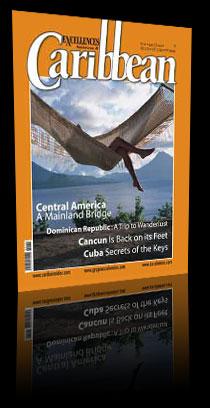That Thin Voice Like the Wind
The man who was born in Santa Isabel de las Lajas, a small town in the province of Pinar del Rio, on August 24, 1919, and nearly died onstage on February 19, 1963, is now coming back as the star of a new movie, The Benny, led by young talented director Jorge Luis Sanchez. So far, the flick has brought down the house in movie theaters across Cuba and set new box-office highs with half a million goers in a just a few weeks following its premiere. In an effort to celebrate the anniversary of his demise, record label EGREM launched Benny Sings Boleros earlier this year, a two-volume album that culls 30 masterpieces sung by the legendary act.
Bartolome Maximiliano More Benitez –that was his real name- learned to play guitar at an early age, and this instrument was with him in parties and serenades in his hometown. He moved to Havana in 1940 and for a number of years he was nothing but a walking troubadour who used to belt out tunes in cafés, parks and in the streets.
Five years later, he traveled to Mexico as part of Miguel Matamoros’ well-known band and made several presentations in Mexican nightclubs before joining the orchestra of Damaso Perez Prado, the King of Mambo. It was in that country where he recorded albums, acted in films and successfully performed in theaters and cabarets. He returned to Cuba and stayed on the island for a while, eventually joining Merceron, Marianao’s eastern band.
A few months later, he trekked back to Mexico to resume a successful musical career. He returned to Cuba in 1953 and performed with the Bebo Valdes’ orchestra before coming up with his own group: The Benny More Giant Band. This orchestra landed with a personal style of its own and with it he put on a streak of shows on the radio, on TV, in theaters and cabarets. That’s how he climbed the stardom of music in Cuba, in Latin America and the Caribbean, and captured the heart of his people.
El Barbaro del Ritmo, as he was nicknamed, built a style of his own unseen up to that moment. His rhythmic gait and his way of singing were unique, with pitches and tones that stamped the undisputed seal of his musical creation –despite the fact that he’d never studied music in any school.
Tall and slender, donning a wide-brimmed hat and blandishing a cane, he climbed onstage in Cuba and elsewhere in the region with his charismatic personality –too often controversial and overreacting- that whipped the legend into shape.
Uttering phrases and shouts, and taking his own dance steps, his performances were those of an extraordinary showman. Today, his music and many anecdotes about his fleeting life are handed down from one generation to the next, shaping up the collective memory of the Cuban people and of his fans in other lands of the Americas.






























































